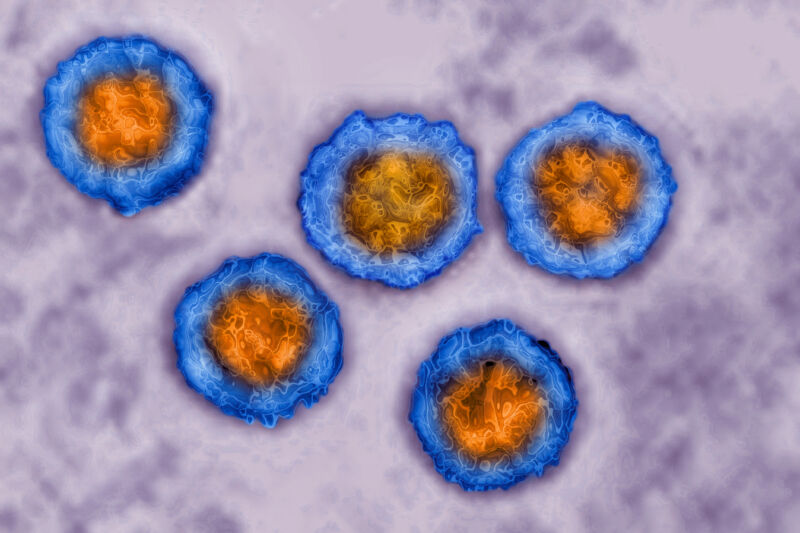
As the US Surgeon General recently highlighted, parenting is stressful. From navigating social media to facing a youth mental health crisis, challenges abound. But, for one father in Spain, even the simple, loving, everyday act of giving your child a peck on the cheek has turned to nightmare fuel.
According to a case report in the New England Journal of Medicine, the man’s 9-year-old daughter developed a fever along with a crusty, blistering lesion on her left cheek. Doctors initially diagnosed the blotch as impetigo, a bacterial infection on the skin’s surface layers that is fairly common in children. It’s often caused by Staphylococcus aureus or Streptococcus bacteria and is generally easily treated with antibiotics.

But, after several days of treatment for impetigo, the child’s symptoms weren’t getting better. At that point, it had been seven days since the lesion erupted, and it was 3 centimeters in diameter on the side of her face. So, he took her to a dermatology clinic. There, specialists closely examined the lesion, noting the red, raised area with blisters and a “honey-crusted appearance,” which is a classic sign of impetigo. They also noted smaller “satellite” blisters around the cheek, as well as swollen lymph nodes on the left side of her neck, the same side as the lesion. All of the symptoms still lined up with impetigo. But then the specialists looked over at her dad.
The doctors took note of a crusting on her father’s lower lip, which he said had started 10 days earlier. It looked like a classic case of common cold sores, aka oral herpes. And the doctors made a connection.
Stress begets stress
Cold sores are caused by herpes simplex virus type 1 (HSV-1), a highly contagious virus that is estimated to infect 3.7 billion people under the age of 50 globally. (There’s also HSV-2, which causes genital herpes). In an initial infection, herpes viruses invade cells on the body’s surfaces, but then go into hiding in nerve cells. From there, they can occasionally reactivate and produce new lesions and infections. For HSV-1, that usually means cold sores around the mouth.
There is no cure for herpes infections; the virus will lurk in a person’s nerve cells for the rest of their lives, with the potential to spur recurring outbreaks. However, there are antiviral treatments that can ease the symptoms of outbreaks and help them clear up a little faster.
When a cold sore develops, the lesions are highly infectious. It’s often transmitted through oral-oral contact, but any direct contact or contact with contaminated saliva can spread the virus. (HSV-2 primarily spreads through sexual contact). And, while HSV-1 lesions typically erupt around the mouth and on mucosal surfaces, they can sometimes also flare elsewhere on the skin.
The dermatologists treating the 9-year-old ran a test for HSV-1, confirming the genetic traces of the virus were present. They started the girl on an oral antiviral drug. They also noted that there was no concern for sexual abuse. The lesion cleared without scarring.
In their report on the case, they end with a note of caution for other doctors: “When HSV-1 infection manifests in children as cutaneous lesions without mucosal involvement, it may be confused with the honey-crusted appearance of impetigo.”
For parents, the lesson is to be careful not to kiss your child (or anyone else) when you have a cold sore flare up. While those viral reactivations can be sparked by many things, one notable factor will likely strike home for parents: stress.























+ There are no comments
Add yours